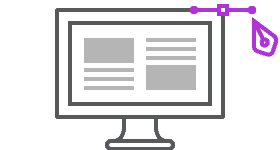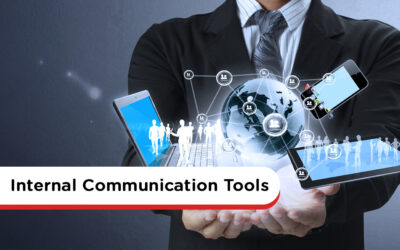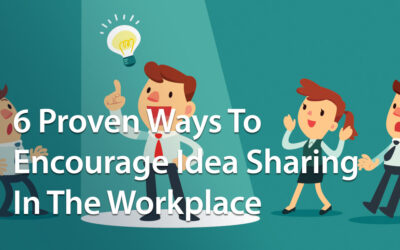Intranet Design Services
Choose from the self-build option with our support or work with one of our designers who will create a customized, fully-functioning intranet for your business, in 40 days or less, guaranteed!
The Challenge: Lack Of Time
You’ve defined your requirements and you know MyHub can deliver the outcomes you’re looking for. But do you lack the time and resources to customize your MyHub intranet site and get it launched on time?
The Solution: We Do It For You
By engaging with one of our designers, we’ll remove all of the complexity and risk by doing it all for you.
Planning For Success
Your MyHub intranet designer will lead the engagement process and ensure you’re updated on progress. The process is broken down into three key stages including:

Scope & Commercials
- Gathering requirements
- Defining launch objectives and timelines
- Developing a site plan including key pages, modules and content
- Agreeing the scope of works, pricing and terms.

Site Design
- Adding a company logo and changing site color options
- Designing and adding pages
- Adding content to pages including images, news articles, text, video and forms
- Adding folders and files to the Document Exchange
- Adding users to the site, Role Groups and Roles

Launch
- Handover and training
- Post-launch support
- Free site audit at any time
MyHub Designers, Delivering Great Outcomes
Intranet Design Articles
Finance Intranet: Benefits, Features, And User Examples
The financial industry faces unique challenges, including stringent regulatory requirements, data security concerns, and the need for efficient internal communication. A finance intranet serves as a secure, centralized platform that addresses these challenges by facilitating seamless collaboration, document management, and compliance tracking.
Key benefits of implementing a finance intranet include centralized information and document management, improved knowledge sharing, streamlined cross-departmental collaboration, enhanced internal communication, increased productivity, and better customer service. These advantages contribute to a more efficient and compliant financial institution.
Real-world examples demonstrate the effectiveness of finance intranets in various organizations. For instance, financial institutions have utilized intranet platforms to automate workflows, securely share documents, and facilitate communication across departments, leading to improved operational efficiency and customer satisfaction.
Disengaged Employees: How Deal With Disengaged Workers
Employee disengagement poses significant challenges to organizations, impacting productivity, morale, and overall performance. Disengaged employees often exhibit signs such as lack of enthusiasm, low energy, frequent tardiness, minimal effort, and avoidance of social interactions. These behaviors not only hinder individual performance but can also influence team dynamics negatively. Recognizing these signs early is crucial for timely intervention.
The causes of disengagement are multifaceted, ranging from poor alignment with the organization’s mission to lack of recognition and limited growth opportunities. Addressing these issues requires a comprehensive approach, including open communication, leadership development, and fostering a culture of appreciation. Implementing strategies that promote employee well-being and professional growth can significantly reduce disengagement levels.
Taking proactive measures to re-engage employees is essential. Strategies such as providing clear career development paths, offering regular feedback, and creating an inclusive work environment can reignite motivation and commitment. By investing in these areas, organizations can transform disengaged employees into active contributors, leading to improved performance and a more positive workplace culture.
Healthcare Intranet: Streamline Processes & Enhance Patient Care
Healthcare organizations face unique challenges when delivering patient care, often needing real-time access to protocols, workflows, and updates. A modern intranet serves as a centralized hub—offering a secure way to share policies, SOPs, workflows, and broadcast vital alerts to staff across facilities and mobile settings. Key features like two-factor authentication, privacy controls, and SSL encryption safeguard sensitive information in line with HIPAA requirements.
Beyond compliance, intranets simplify the daily lives of medical teams. Built to be user-friendly, visually engaging, and straightforward, these platforms sit on a strong foundation of no-code ease and custom integrations—whether for Microsoft 365, Google Workspace, or payroll systems. Designed for the fast-paced healthcare environment, they bring information directly to hands on the go via mobile apps.
Real-world use cases show how diverse healthcare settings benefit. For instance, aged care homes use intranets for social calendars, maintenance and care requests, digital SOP libraries, and family-facing extranet portals; Medical groups enable push-based workflow automations, blogs, video knowledge sharing, searchable contact directories, and shared on-call schedules; and multi-disciplinary clinics collaborate on practice docs via embedded tools, communicate instantly between sites, and publish recognition updates to keep morale high.
10 Must-Have Internal Communication Tools
Effective internal communication hinges on having the right mix of tools that foster clarity, connection, and engagement across diverse teams. The MyHub article presents the 10 most essential tools organizations should have in their communication toolkit—from central intranet platforms to mobile access and instant messaging. Each plays a role in bridging gaps and streamlining workflows today.
At the top of the list is the company intranet, a secure, central hub that links employees to information, resources, newsfeeds, directories, and collaborative tools. Complementary tools like mobile intranet apps ensure no one is disconnected—especially frontline or remote staff. Features such as update feeds, instant messaging, collaboration spaces, internal blogs/CEO messaging, knowledge management modules, feedback surveys, project tracking, and internal social networks round out a powerful agenda for engagement and productivity.
Together, these tools create a connected workplace where information flows seamlessly, feedback is honored, collaboration thrives, and every team member—regardless of location—has a voice. From actionable newsfeeds to two-way forums and social channels, modern internal communication goes deeper than broadcasting. It’s about building relationships, trust, and efficiency—all through purposeful tools.
Social Intranet Software – Social Media Networking For Employees
A social intranet transforms the traditional internal network into a vibrant collaboration hub. By incorporating features like instant messaging, activity walls, forums, and personalized employee profiles, it bridges the communication gap between remote, hybrid, and in-office teams—making interaction seamless and inclusive.
These platforms enable meaningful engagement through recognition tools, giving employees a voice at all levels—from top-down announcements to peer shoutouts and peer-to-peer thanks. The benefits extend to faster decision-making facilitated by real-time messaging (with 66% of users resolving queries quickly and 75% seeing reduced calls and emails), efficient knowledge sharing, and speedy onboarding via virtual channels.
Social intranets also strengthen company culture by letting employees share personal interests through rich user profiles—fostering connections even when teams are spread across locations. Their impact ranges from improved morale and reduced absenteeism to smoother onboarding and problem-solving, especially within distributed teams.
Sharing Ideas – How To Encourage Staff To Share Ideas
Encouraging employees to share ideas, knowledge, and insights is essential for nurturing innovation and improving business performance. Modern intranet platforms facilitate a smooth idea-sharing experience by being accessible to all staff—as well as to freelancers, contractors, and remote workers—at any time. These systems provide a structured environment where contributions thrive.
Successful idea-sharing involves more than just collecting suggestions—it requires the right tools and culture. Intranet-based systems stand out by making idea submission accessible, enabling transparent tracking, and allowing employees to monitor progress on their contributions. This fosters trust, keeps creativity flowing, and prevents the feeling of being ignored.
By formalizing idea-sharing processes—especially using intranet technology—organizations capture frontline insights more effectively, speed up evaluation and implementation, and maintain transparency throughout. This strengthens engagement, fuels collaboration, and helps transform spontaneous eureka moments into tangible improvements.







